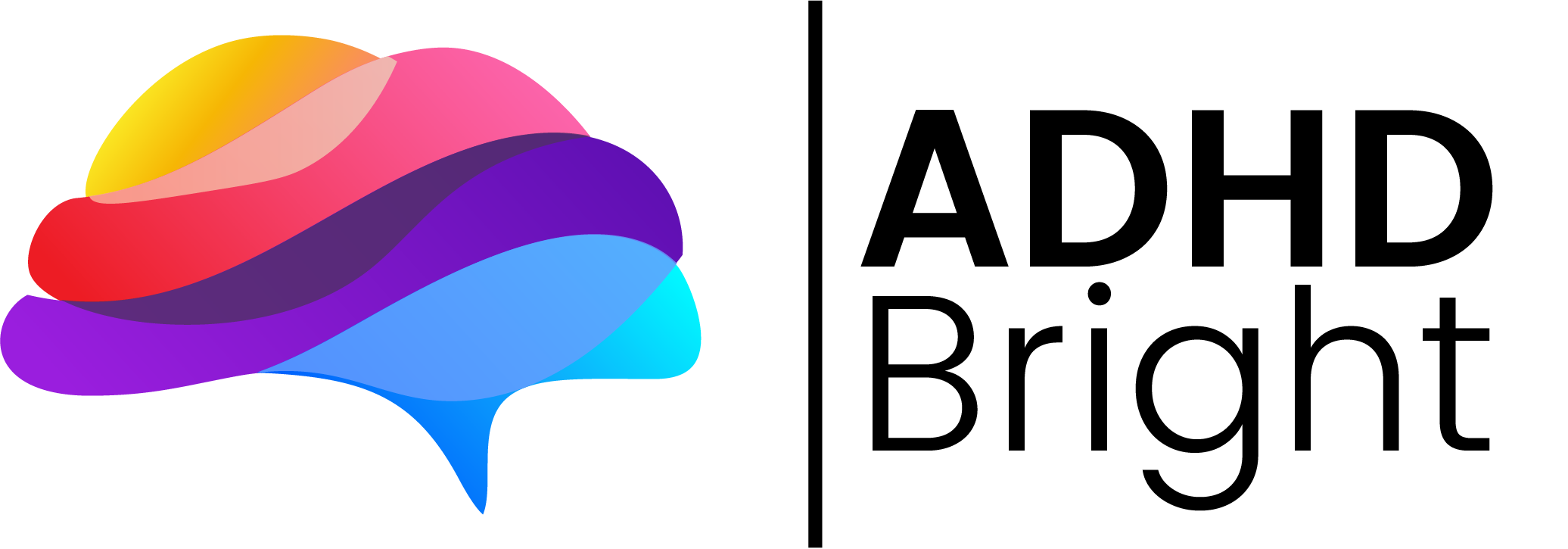I’ve tried every planner under the sun — paper planners, bullet journals, printable ADHD planners on Etsy, even apps like Trello and Asana. Every time, I hoped I’d finally found the best ADHD planner, only to abandon it a week later. If you’ve ever stared at a beautiful layout that made you feel more overwhelmed than organized, you know exactly what I mean.
In this guide, I’ll compare what actually works for ADHD adults — from paper planners to digital ADHD planners — based on neuroscience, real-life testing, and the way the ADHD brain truly functions. By the end, you’ll know which system helps you stay focused, plan your day, and actually stick with it.
How ADHD Brains Plan Differently
People with ADHD aren’t lazy — our brains are wired differently.
ADHD brains have less consistent dopamine activity, meaning we crave stimulation and fast rewards. That’s why to do lists feel exciting for a day, then disappear the next.
Executive function challenges make it harder to manage working memory, estimate time, and break down big projects. Traditional planners often add more pressure instead of relief.
An effective planner for ADHD must reduce friction, deliver instant feedback, and help externalize memory — not just organize it.
What Makes a Planner ADHD-Friendly
Here’s what separates the best ADHD planners from standard planners:
- Dopamine-friendly design: small wins and visual cues that feel rewarding.
- Simple structure: minimal setup, clear color coding, and a calm layout.
- Habit tracking: visible streaks or progress bars keep motivation alive.
- CBT-inspired journaling: prompts that build self-awareness and emotional regulation.
- Flexible digital access: the right planner syncs across devices so you can set reminders, manage daily tasks, and stay organized anywhere.
When a planner begins with these neuroscience principles, it becomes more than stationery — it becomes a supportive planning tool for real ADHD life.
If you’re still deciding which layout or format fits your brain best, you’ll love How to Choose the Best Planner for ADHD — it breaks down the core features that actually make planning easier for ADHD adults.
Comparison Chart — Best ADHD Planners for Adults (2025)
Planner | Type | Best For | Price | Key ADHD Features | Why It Works / Doesn’t |
|---|---|---|---|---|---|
| ADHD Bright | Digital (Notion) | Adults seeking a complete ADHD-support system—professionals and non-professionals alike. Available anywhere | $69–$109 | Habit tracker, routines, CBT journaling, timeboxing | Neuroscience-backed, ADHD-specific, customizable |
| Clever Fox Planner | Paper | Visual thinkers | $35 | Goal breakdowns, habit boxes | Great layout, but lacks dopamine feedback |
| Erin Condren LifePlanner | Paper | Creative ADHDers | $60 | Colorful, customizable | Overwhelming setup for ADHD users |
| Tiimo App | Digital | On-the-go users | $5.99/mo | Visual scheduling, reminders | Great interface, limited journaling features |
| Motion App | Digital | Professionals | $19/mo | AI task automation | Powerful, but overstimulating UI |
| Planner Pad | Paper | Minimalist users | $40 | Funnel layout | Simple but no digital sync |
Paper Planners: Beautiful but High-Maintenance
I wanted to love every paper planner I bought. The tactile feel, the cute sticky notes, the fresh morning coffee ritual. It all feels promising.
But for most ADHD adults, paper planners quickly become guilt objects. You forget them at home, miss important events, or waste time rewriting the same task lists every day.
Even the Legend Planner, a favorite among goal-setters, demands daily rewriting of to do lists, monthly goals, and reflections. It’s a well-designed planner, but it’s not forgiving for an ADHD brain that thrives on flexibility and automation.
Paper planners are great tools for personal development, but they don’t adapt dynamically. You can’t set reminders, sync due dates, or automatically pull tasks into a weekly planner. For an ADHD brain, that’s friction and friction kills consistency.
Bullet Journals and Etsy ADHD Planners: Too Much Work
Let’s talk about that $30 ADHD planner I bought on Etsy. It was gorgeous, pastel tabs, beautiful pages, visual reminders everywhere. But after a few days, I was exhausted. I had to manually write every single task, every habit, every event.
Planning something in the future meant flipping pages, checking what I’d already scheduled, then rewriting everything again. It wasn’t connected to my digital app, my daily planner, or even my to do list. It looked good, but it wasn’t a system, just a binder that amplified my executive function challenges.
If you’ve ever tried a bullet journal, you probably get it. They require constant setup, color coding, and maintenance. That might work for neurotypical creatives, but for ADHDers, the effort outweighs the benefit. It’s not a perfect ADHD planner — it’s a second job.
Digital ADHD Planners: Better, But Not Always the Right Fit
Digital planners promise flexibility, but not all of them are built for ADHD brains. Tools like Asana or Trello are great project managers, not actual planners.
Asana: It’s structured, minimal, and great for team coordination — but it’s not a planner for ADHD. It lacks built-in habit tracking, journaling, or dopamine-friendly progress feedback. It’s more of a workflow app than a daily planner.
Trello: I love its visual cues and flexible boards, but building a workflow from scratch is a big project by itself. Designing columns, assigning labels, and keeping to do lists updated quickly becomes overwhelming. I’d spend more time organizing than actually doing — then abandon it.
Digital ADHD planners should reduce friction, not add another layer of customization. Even apps like Tiimo or Motion look promising but can overstimulate or lack the emotional and reflective tools ADHD adults truly need.

Why ADHD Bright Is Different
After years of trying the best planners and standard planners, ADHD Bright finally clicked. It’s not a trend — it’s built on neuroscience.
ADHD Bright works with how your brain works, not against it. It combines every planning tool an adult ADHD brain needs:
- A habit tracker and habit trackers that give dopamine hits for progress.
- Timeboxing calendars that fight time blindness and improve time management.
- CBT-based journaling for self-discovery, self-care, and gratitude journal reflections.
- Built-in routines and daily planning sessions that minimize distractions and encourage daily routines.
- Automatic monthly calendar and weekly planner views that keep everything connected.
It’s a customizable planner that feels intuitive, not intimidating — a genuine game changer for people with ADHD who want to stay organized and use time effectively.
Whether you’re a student balancing academic planner needs or a professional juggling important deadlines, ADHD Bright adapts. It’s forgiving when you skip days, rewarding when you show up, and easy to start planning again without guilt.
If you’d like to understand exactly why ADHD Bright’s system works with your brain’s dopamine and focus pathways, I’ve broken down the science in 7 Neuroscience Principles Behind ADHD Bright
The Bottom Line
Finding the right ADHD planner isn’t about trends. It’s about how your ADHD brain responds to structure and reward.
Paper planners and bullet journals may look beautiful, but they rarely sync with everyday life.
Apps like Asana or Trello help you plan big projects but don’t manage daily tasks or emotional flow.
The best ADHD planners are the ones that combine simplicity, automation, and dopamine-driven design, and ADHD Bright does exactly that.
If you’ve struggled to find the perfect planner that helps you stay focused, plan ahead, and actually follow through, this might finally be the best ADHD planner for you.
Final thought:
The planner makes or breaks your motivation. When a system understands how your ADHD brain operates, planning becomes less about control and more about clarity.
ADHD Bright was designed by someone who lives it. A great tool that finally helps you plan time effectively, track habits, and feel calmer in your everyday life.




